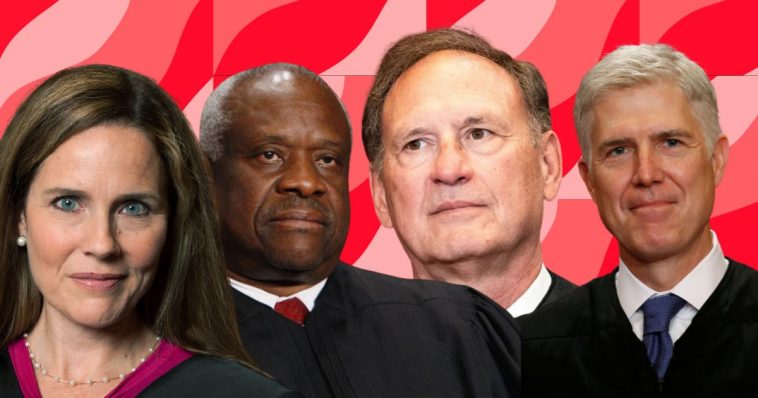From 100PercentFedUp - READ ORIGINAL
Some media, including videos, may only be available to view at the original.
The Supreme Court has just issued a major ruling that curtails the Biden admin’s environmental goals.
SCOTUS ruled against the Environmental Protection Agency’s “Good Neighbor” rule, which sought top unify 23 state’s differing approaches to air quality management into a single federal rule.
Supreme Court halts Biden administration’s “good neighbor” plan to curb smog across states, again limiting government power to protect the environmenthttps://t.co/O14Dg49sUa
— CNN Breaking News (@cnnbrk) June 27, 2024
Simon Ateba broke down SCOTUS’ ruling in this post:
BREAKING – RULING AGAINST BIDEN’S EPA: The Supreme Court has just now blocked the Environmental Protection Agency’s (EPA) Good Neighbor Plan, which aimed to impose uniform emissions-reduction measures on 23 states to improve downwind air quality.
NOTE: The Court found that the… pic.twitter.com/oQGCqtzWpQ
— Simon Ateba (@simonateba) June 27, 2024
The New York Post explained:
The Supreme Court temporarily blocked a Biden administration policy meant to reduce cross-state air pollution Thursday, preventing it from taking effect while lower court litigation played out.
In a 5-4 decision, the justices handed a win to three Republican-led states — Indiana, Ohio and West Virginia — as well as US Steel, pipeline operator Kinder Morgan and other steel and fossil fuel industry groups that had contested the policy.
The Environmental Protection Agency triggered the challenge in March 2023 when it proposed a rule that would have applied to power plants and other industrial sources of ozone in 23 upwind states whose own emission-reduction plans were found to run afoul of the so-called “Good Neighbor” provision of the federal Clean Air Act.
The “Good Neighbor” rule is meant to assist downwind states such as New York, Pennsylvania and Wisconsin comply with federal air quality standards.
Writing for the majority, Justice Neil Gorsuch found that the plaintiffs were likely to succeed in their claim that the proposed EPA rule was “arbitrary” and not “reasonably explained.
Forbes has more details on what this ruling means:
The Supreme Court temporarily blocked the Environmental Protection Agency’s “Good Neighbor” policy on Thursday while litigation moves forward, a ruling that could increase pollution by getting rid of restrictions on air pollution that could flow down to other states.
The “Good Neighbor” plan requires states that are “upwind” to reduce pollution that flows into “downwind” states and keeps them from meeting federal air quality standards.
After states submitted proposals to comply with the policy, the EPA said in 2023 that 23 states’ plans weren’t adequate, and imposed its own federal implementation plan (FIP) that those states must follow in order to comply with the policy.
That FIP gives states a “budget” for their emissions, the government noted in a court brief, and the EPA estimated it would prevent approximately 1,300 premature deaths in 2026 alone and cut emissions from power plants by 50% by 2027, compared with 2021 levels.
A number of those states challenged the FIP and the EPA’s rejections of their proposals to comply with the policy, while the agency put the implementation of the FIP on hold in other states, leading to a patchwork of policies across the country.
Twelve states asked the Court of Appeals for the D.C. Circuit to block the FIP while the litigation played out, which the appeals court refused to do, leading the
states to go to the Supreme Court and ask for relief.
The Supreme Court ruled 5-4 to block the FIP while the litigation moves forward, meaning none of the states have to comply with the “Good Neighbor” policy until the litigation is resolved.


